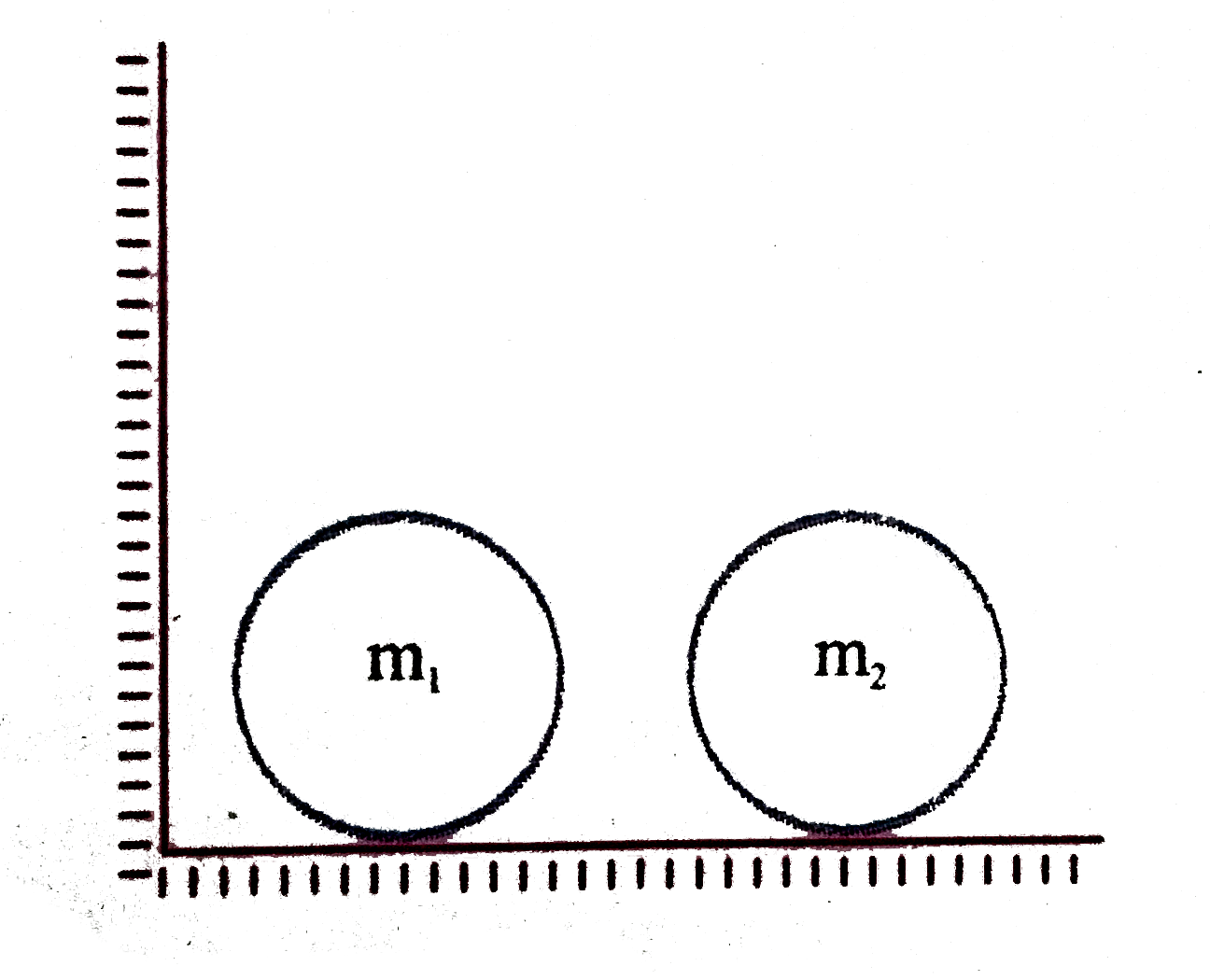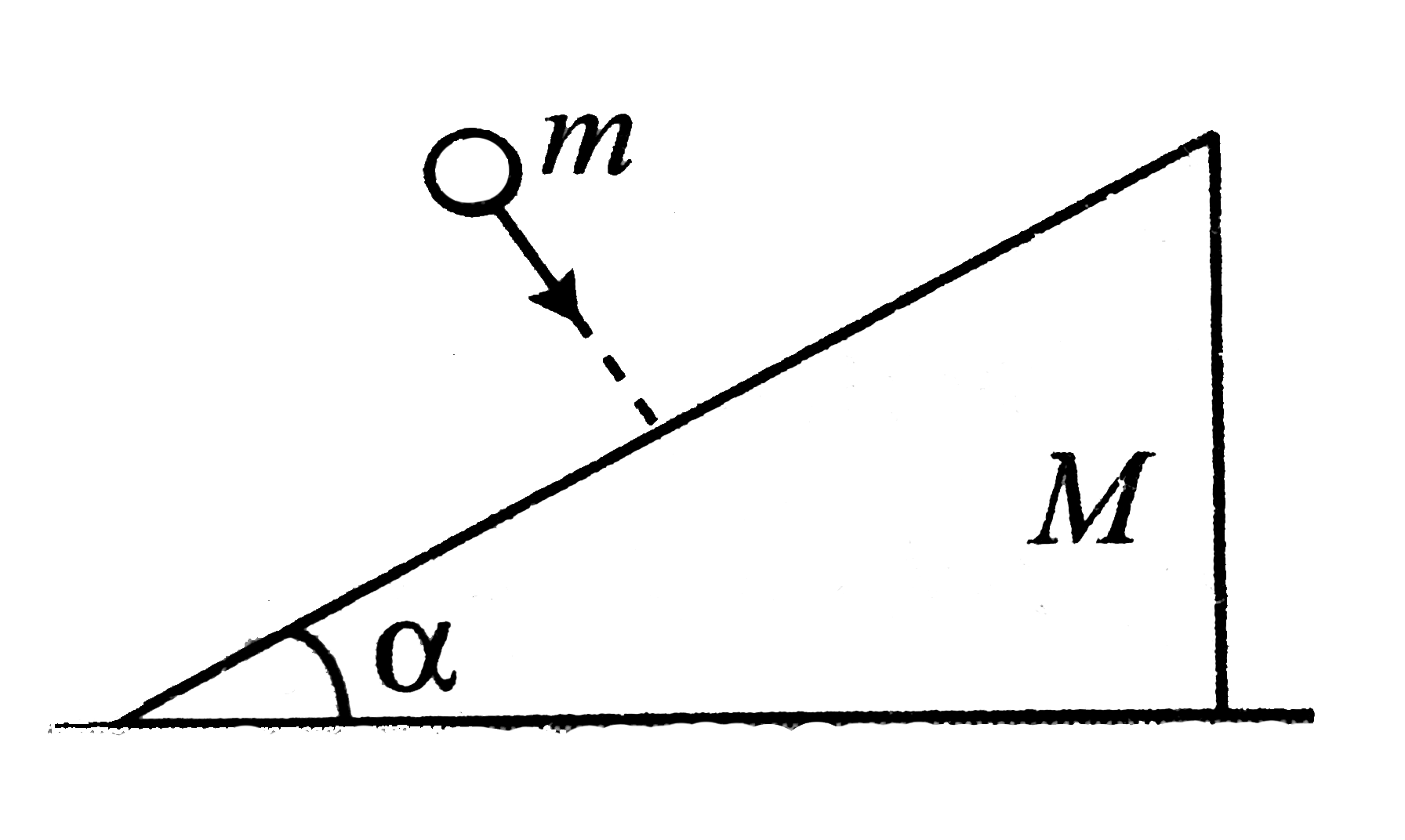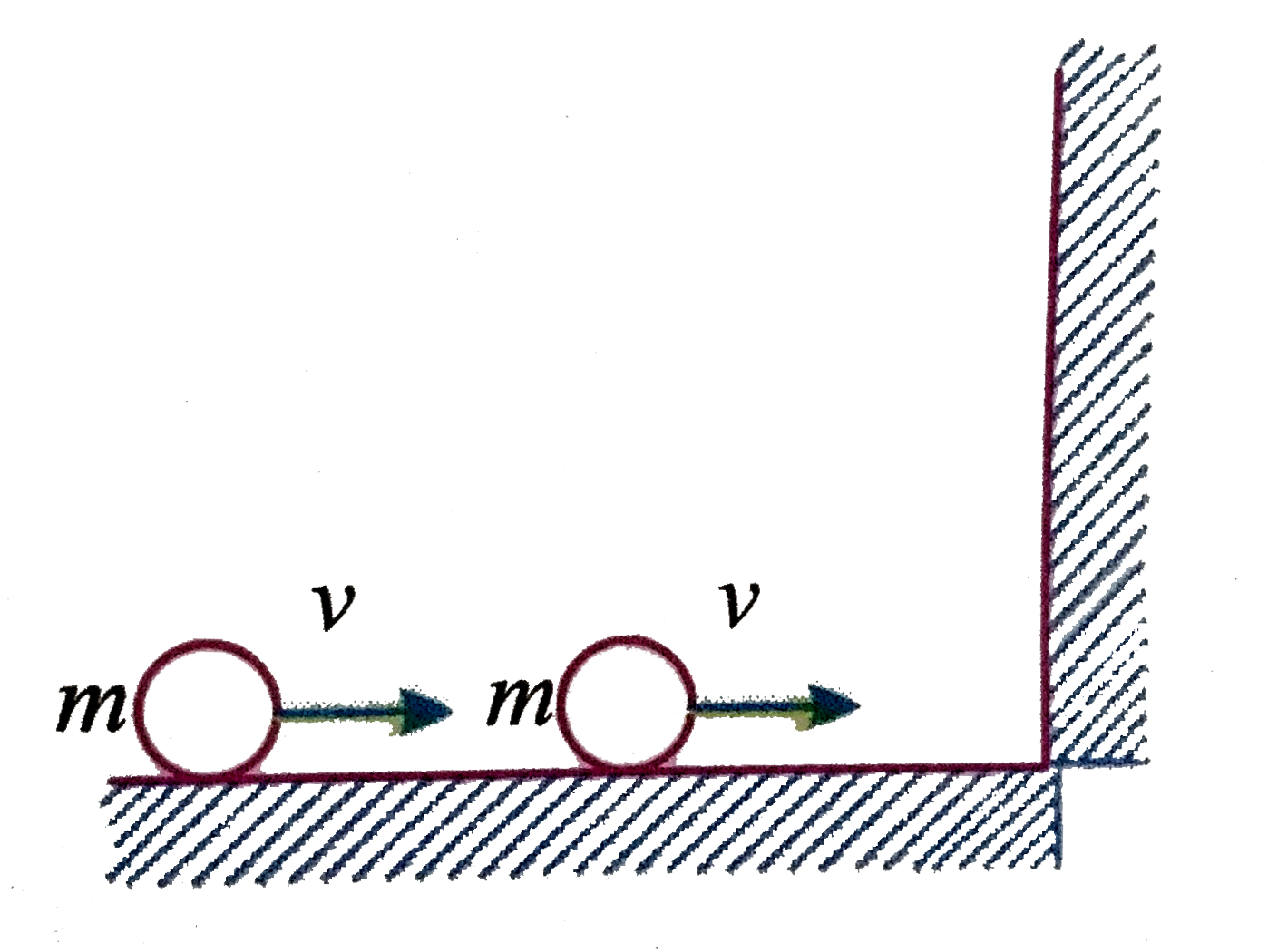Mass m1 strikes m2 which is at rest. The ratio of masses for which they will collide again. (Collisions between ball and wall are elastic. Coefficient of resttution between m1 and m2 is e and all the surface are smooth)

e2+e
2e2+e
e2(2+e)
1
The correct Answer is:C
m1u1=−m1v1+m2v2
e=2v1v, for , m1m2<e2+e
Topper's Solved these Questions
- BOOK - NARAYNACHAPTER - COLLISIONEXERCISE - INTEGER TYPE QUESTIONS8videos
COLLISION
- BOOK - NARAYNACHAPTER - COLLISIONEXERCISE - Multiple Answer11videos
COLLISION
- BOOK - NARAYNACHAPTER - CIRCULAR MOTIONEXERCISE - LEVEL II(H.W)51videos
CIRCULAR MOTION
- BOOK - NARAYNACHAPTER - FRICTIONEXERCISE - Passage type of questions I6videos
FRICTION
Similar Questions
A ball of mass m collides with a stationary wedge of mass M, perpendicular to its inclined face, inclined at an angle as shown in the figure. If the coefficient of restitution between the wedge and ball is e, calculate the ratio of modulus of velocity of the ball immediately after and before collision. Also calculate the velocity of wedge just after collision.
 View Solution
View SolutionTwo blocks of mass m1 and m2(m2>m1) are placed in contact with each other on an inclined plane as shown in figure . The coefficient of friction between m1 and surface is μ1 and between m2 and surface is μ2.


 View Solution
View Solution
Knowledge Check
- Question 1 - Select One or More
The block each of mass 1kg are placed as shown .They are connected by a string which passes over a smooth (massless) pulley.

There is no friction between m1 and the ground.The coefficient of friction between m1 andm2 is 0.2A force F is applied to m2. Which of the fpllowing statement is/are correct?AThe system will be in equilibrium if F≤4NBF≥4N tension in the string will be 4NCF≥4N the frictional force between the blocks will be 2NDF=6N tension in the string will be 3N - Question 2 - Select One
The first ball of mass m moving with a velocity u collides head on with the second ball of mass m at rest. If the coefficient of restitution is e, the ratio of final velocity of the second ball to the initial velocity of the first ball is
A1−e1+eB1+e1−eC1+e2D1−e2 - Question 3 - Select One
Two balls each of mass 'm' are moving with same velocity v on a smooth surface as shown in figure. If all collisions between the balls and balls with the wall are perfectly elastic, the possible number of collisions between the balls and wall together is
 A1B2C3DInfinity
A1B2C3DInfinity
Two balls each of mass 'm' are moving with same velocity v on a smooth surface as shown in figure. If all collisions between the balls and balls with the wall are perfectly elastic, the possible number of collisions between the balls and wall together is
 View Solution
View SolutionIn perfectly elastic collision between two masses m1andm2 in one dimension energy transfer is a maximum, when
View SolutionThe first ball of mass m moving with the velocity υ collides head on with the second ball of mass m at rest. If the coefficient of restitution is e, then the ratio of the velocities of the first and the second ball after the collision is
View SolutionA ball of mass m moving with a constant velocity strikes against a ball of same mass at rest. If e= coefficient of restitution, then what will the the ratio of the velocities of the two balls after collision?
View SolutionA ball of mass m moving with a speed 2v0 collides head-on with an identical ball at rest. If e is the coefficient of restitution, then what will be the ratio of velocity of two balls after collision?
View Solution
